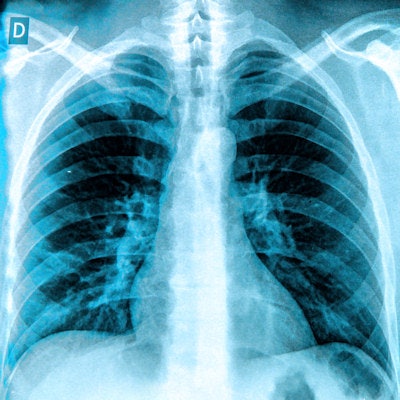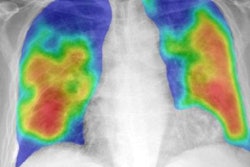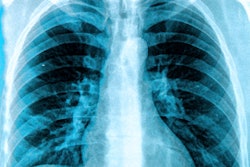
Almost 60% of chest x-rays taken in urgent care settings in patients with confirmed and symptomatic COVID-19 are interpreted as "normal," according to a study to be published in the May issue of the Journal of Urgent Care Medicine (JUCM).
The findings suggest that, in the absence of confirmation of disease via reverse transcription polymerase chain reaction (RT-PCR) testing, ambulatory care clinicians should be cautious when a chest x-ray is interpreted as negative if a patient is demonstrating signs of COVID-19, wrote a team led by Dr. Michael Weinstock of Ohio State University in Columbus and senior editor of JUCM.
"A normal chest x-ray is no guarantee [that COVID-19 is not present]," the team wrote.
Most patients with COVID-19 have mild respiratory symptoms, and many are first seen in nonemergency and nonhospital settings, such as urgent care centers. Chest x-ray is often the first imaging exam acquired after a positive RT-PCR if a patient is at risk for disease progression, Weinstock's group said.
"If testing for COVID-19 is unavailable, imaging can determine if an alternative diagnosis is present (e.g., lobar pneumonia) or, if findings suspicious for COVID-19 are revealed, can guide further workup," the researchers noted.
To assess what percentage of patients with confirmed disease would have normal versus abnormal chest x-rays, the researchers conducted a study that included 636 patients with positive RT-PCR tests for the SARS-CoV-2 virus who underwent chest x-ray between March 9 and March 24.
Patients were identified via electronic medical records taken from an urgent care network of 100 centers in New York and New Jersey. The group sought to determine how many of these patients had normal versus abnormal x-rays. A secondary goal was to describe typical COVID-19 abnormal findings on chest x-ray.
The group found that almost 90% of COVID-19-positive patients had either normal or mildly abnormal chest x-rays, despite having respiratory symptoms of the disease. Effusions and lymphadenopathy were rare. The authors also found the following:
| Characteristics of chest x-ray in patients with confirmed COVID-19 | |
| Imaging characteristics | Percentage of total patients |
| Severity | |
| Normal | 58.3% |
| Mild | 30.7% |
| Moderate | 10.2% |
| Severe | 0.8% |
| Abnormal finding | |
| Interstitial | 23.7% |
| Ground-glass opacities | 18.9% |
| Consolidation | 5.3% |
| Location | |
| Lower | 33.8% |
| Upper | 20.1% |
| Diffuse | 0.9% |
"The majority of COVID-19 patients who present in [the urgent care] setting show no identifiable abnormalities on standard chest x-ray assessment," the team wrote.
The authors did acknowledge that one of the study's limitations was that only one chest x-ray was acquired for each patient.
"Because patients presented at various phases of illness, it is impossible to know whether patients with normal chest x-rays at time of presentation developed radiographic findings later in their illness," they wrote.



















